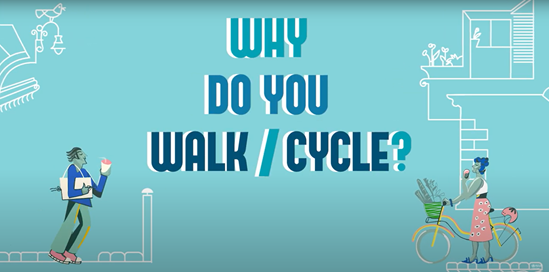Supporting Member States to increase physical activity levels
Priorities for the Region
WHO/Europe is committed to supporting Member States to increase physical activity levels among all citizens of the WHO European Region. As part of the leadership and convening role of WHO, the Physical Activity Strategy for the WHO European Region 2016–2025 was established in 2015 to bring together governments and stakeholders to work together in 5 priority areas:
- providing leadership and coordination for the promotion of physical activity;
- supporting the development of children and adolescents;
- promoting physical activity for all adults as part of daily life, including during transport, leisure time, at the workplace and through the health-care system;
- promoting physical activity among older people;
- supporting action through monitoring, surveillance, the provision of tools, enabling platforms, evaluation and research.
Increasing physical activity levels requires a systems-based approach – where all stakeholders work together towards a healthier world. Multi-level policies for action – including social, cultural, economic, environmental, educational and informational approaches – are essential if by 2030 we are to reach the target of a 15% relative reduction in the global prevalence of physical inactivity.
The Global Action Plan on Physical Activity 2018–2030 proposes a system-based approach to reaching this target, with 4 main objectives:
- create active societies
- create active environments
- create active people
- create active systems.
Physical activity and the Sustainable Development Goals
Investing in physical activity can contribute to a more equitable, sustainable and prosperous world. The promotion of physical activity can also contribute to the achievement of many of the targets of the Sustainable Development Goals (SDGs):
- SDG 3 (good health and well-being)
- SDG 2.2 (ending all forms of malnutrition)
- SDGs 4.1 and 4.2 (quality education)
- SDG 5.1 (gender equality)
- SDG 8 (decent work and economic growth)
- SDG 9.1 (industry, innovation and infrastructure)
- SDGs 10.2 and 10.3 (reduced inequalities)
- SDGs 11.2, 11.3, 11.6 and 11.7 (sustainable cities and communities)
- SDGs 12.8 and 12c (responsible production and consumption)
- SDGs 13.1 and 13.2 (climate action)
- SDGs 15.1 and 15.5 (life on land)
- SDGs 16.1 and 16b (peace, justice and strong institutions)
- SDG 17 (partnerships).









